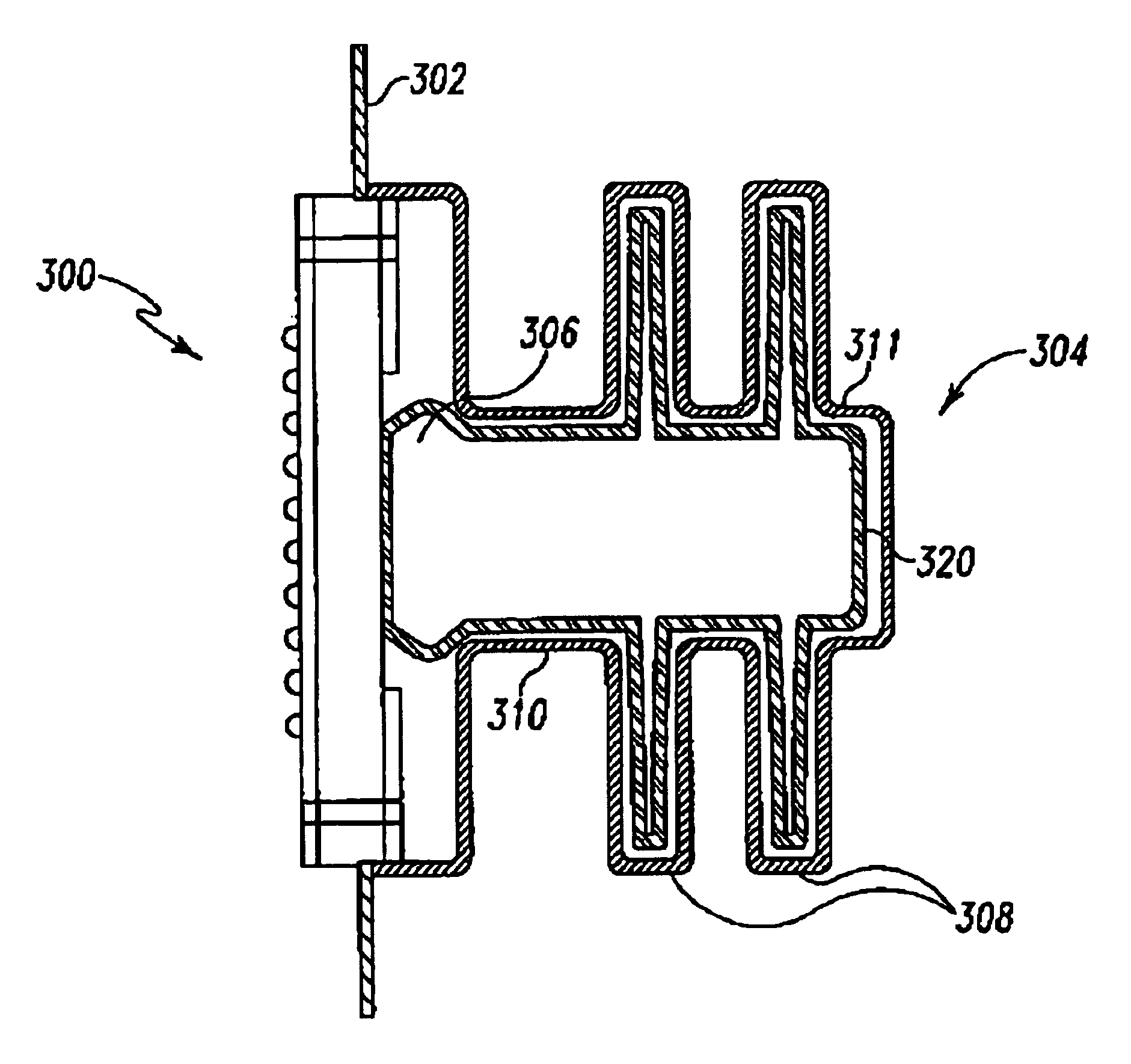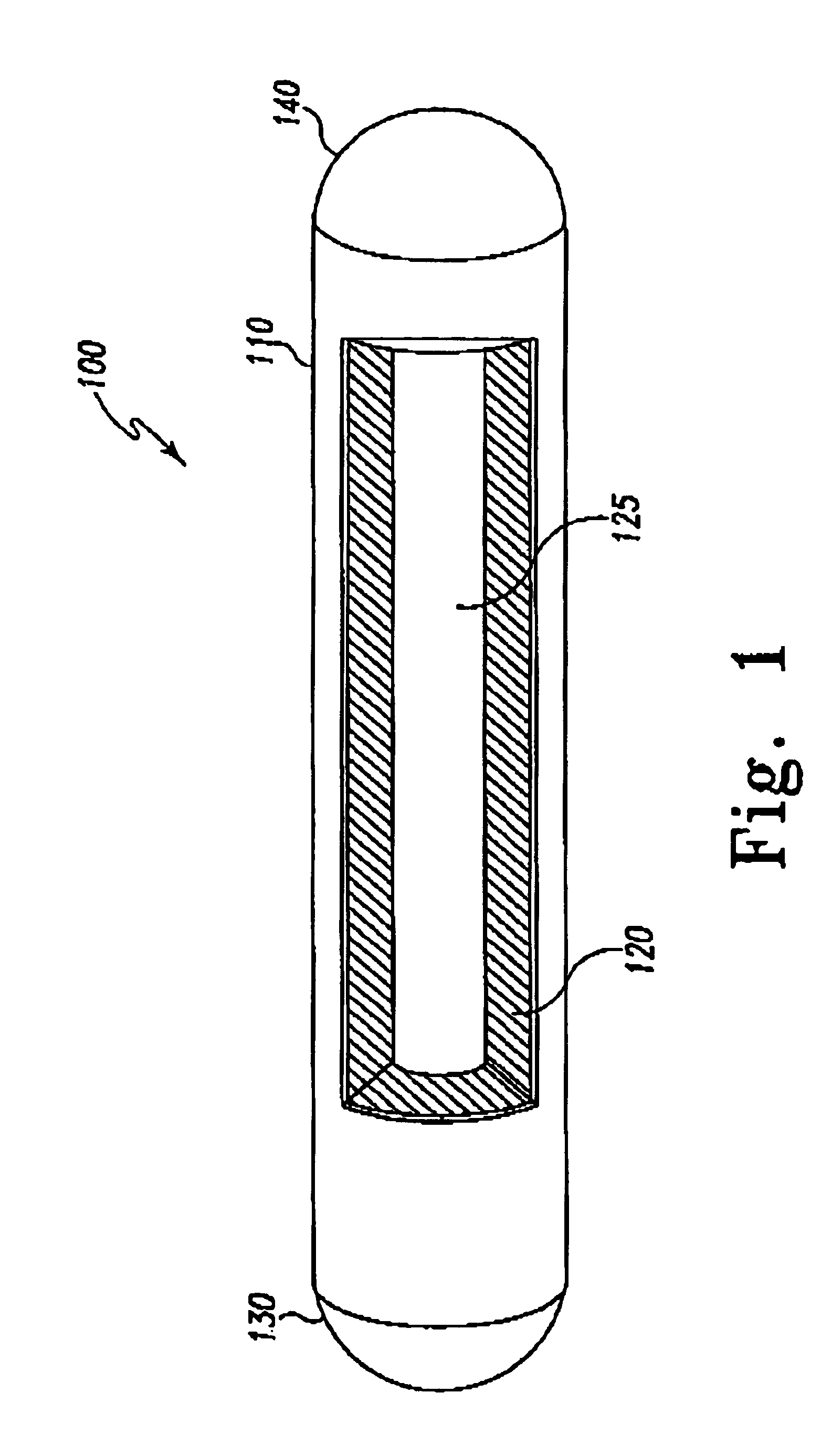Automotive lighting assembly cooling system
a cooling system and lighting assembly technology, applied in indirect heat exchangers, semiconductor devices of light sources, light and heating apparatus, etc., can solve the problems of easy breakage of filaments, high electrical power consumption, and large amount of hea
- Summary
- Abstract
- Description
- Claims
- Application Information
AI Technical Summary
Problems solved by technology
Method used
Image
Examples
Embodiment Construction
[0012]FIG. 1 is a partial cutaway view of a heat pipe. Heat pipe 100 comprises shell 110, wick 120, evaporation area 130 and condensation area 140. Wick 120 is initially saturated with a fluid such as deionized water. The basic operation of heat pipe 100 is as follows. Evaporation area 130 is placed so as to be thermally coupled to a heat generation site. Condensation area 140 is placed in an area which is at a lower temperature relative to the heat generating site. Thus, as heat is generated, the heat is transferred to heat pipe 100 at evaporation area 130. As heat is transferred to evaporation area 130, the fluid within wick 120 near to evaporation area 130 is heated. As the heated fluid reaches its vaporization temperature, the fluid is vaporized, thus absorbing more heat. The vaporized fluid expands into void 125 defined by shell 110, transferring heat by convection away from evaporation area 130.
[0013]The vaporized fluid expands within shell 110 to condensation area 140. Conden...
PUM
 Login to View More
Login to View More Abstract
Description
Claims
Application Information
 Login to View More
Login to View More - R&D
- Intellectual Property
- Life Sciences
- Materials
- Tech Scout
- Unparalleled Data Quality
- Higher Quality Content
- 60% Fewer Hallucinations
Browse by: Latest US Patents, China's latest patents, Technical Efficacy Thesaurus, Application Domain, Technology Topic, Popular Technical Reports.
© 2025 PatSnap. All rights reserved.Legal|Privacy policy|Modern Slavery Act Transparency Statement|Sitemap|About US| Contact US: help@patsnap.com



